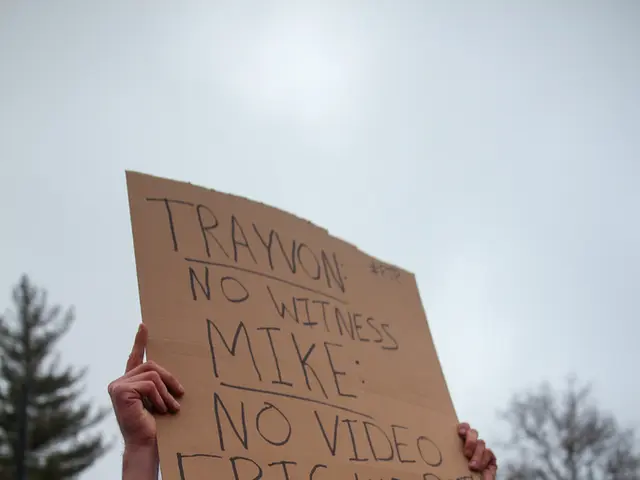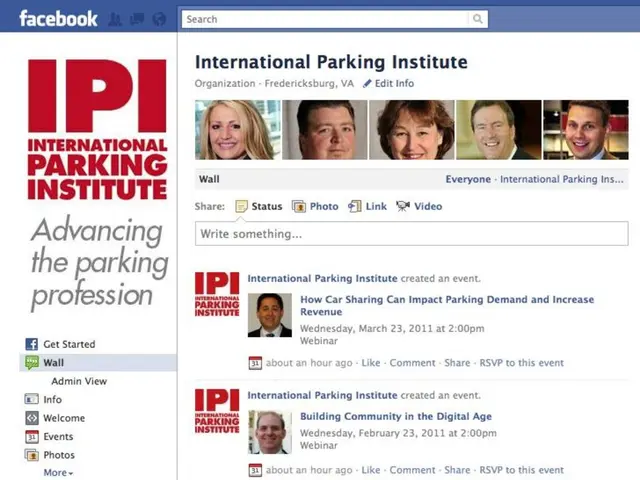White House faces potential threat from SpaceX's Starlink satellite network
Familiar Face in the Federal House: Starlink's Questionable Security
Elon Musk's Starlink system has found a cozy spot in the White House, installed on a neighboring building back in February. Ever since, White House staff has been fretting over potential security risks. With guests jumping onto the Wi-Fi, secret details might be up for grabs, and the ultimate destination of the data remains shrouded in mystery.
Insiders allege that the Department of Defense, along with personnel from the Trump administration, overlooked crucial security concerns regarding communication within the White House. Reports suggest that the Washington Post substantiate these claims, revealing that the Starlink terminal was hastily installed on the Eisenhower Executive Office Building in February, without proper consultation or monitoring from the White House Communications Agency.
The Communications Agency's oversight is significant, as their presence ensures that any sensitive data leaving the complex is identified, and potential cyber-breaches are preempted. The absence of such checks has left the White House vulnerable, as data can leak or hackers can infiltrate the system unnoticed.
Political Jabs and Tech Spats
The Starlink terminal's future remains uncertain, even after Elon Musk parted ways with his role in the Trump administration. As of now, the terminal seems to be sticking around. Since the installation, a "Starlink Guest" Wi-Fi access point requires only a password to activate, without the need for a username or other authentication measures.
Interestingly, the Secret Service dismissed the security concerns and declared that the matter did not constitute a security incident or breach. However, usual White House protocol requires strict scrutiny and tracking of devices and data communications. For instance, private phones need both names and passwords to operate, and these permissions expire weekly. Work computers are protected with advanced security programs, keeping a vigilant eye on employee interactions and data exchanges with the outside world.
When the Golden Dome Shines, but Security Fades
Although Starlink offers an unparalleled approach to data transmission, it dances around traditional security systems. Without any form of recording or tracking, the White House's stringent cybersecurity measures fall flat. A former White House employee raised concerns about potential security vulnerabilities with the House Oversight Committee, further emphasizing the dangers of the system.
Democrat leader Stephen F. Lynch explained that Starlink, if left unchecked, could threaten national security by exposing sensitive information to hackers, adversaries, or malicious parties. Conversely, Starlink prides itself on the system's resistance to hacking. Recently, intelligence agencies have expressed concerns about the system's use in other government departments, such as the National Labor Relations Board.
The disparity between秋波's technological innovations and traditional security measures has sparked debate over the proper balance between progress and security in the sensitive government environment. The controversy emphasizes the need for a holistic approach to safety and technology, ensuring the sanctity of classified information without stifling technological advancement.
On a Different Front: Looming Controversy in Italy
While the installation of the Starlink terminal at the White House has stirred complex security issues, Starlink's deal with Italy is on hold, raising more questions about the system's dispersal and intended use in important government environments.
The Commission, in the midst of preparing a draft directive to safeguard workers from carcinogen exposure risks, is also grappling with the politics of technology in the era of Starlink, as questions about the system's security in sensitive government environments, like the White House, persist.
Intriguingly, the debate over Starlink's integration in the Italian general-news scene,, while distinct from the White House controversy, underscores the broader issue ofbalancing technological advancements with traditional security measures to maintain the sanctity of classified information.








